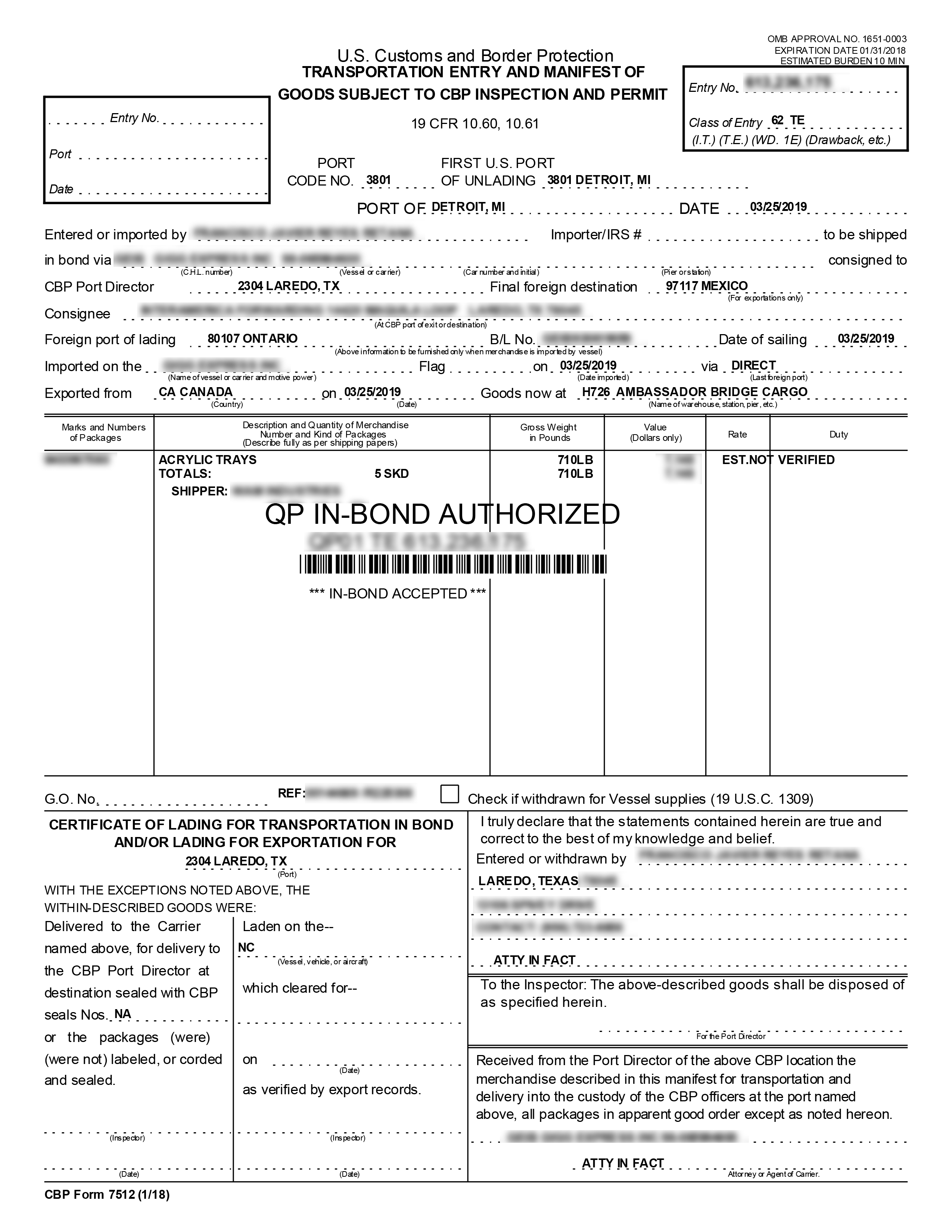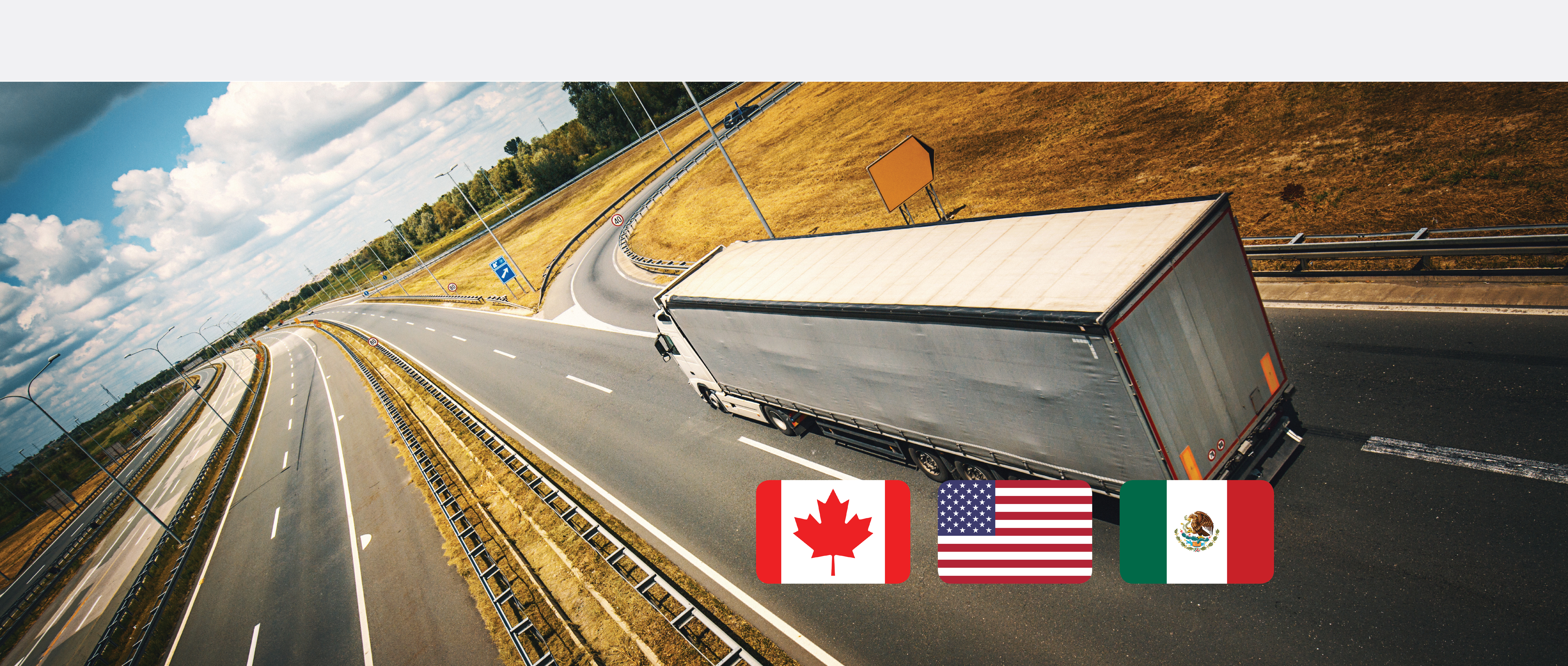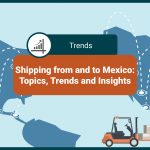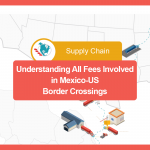Updated: Here is what you need to know about in-bond shipments being transported to Mexico through the US
If you plan to transport goods through the United States you will surely hear the term “bond” or “customs bond”. In this post, we explain what is the bond and what in-bond shipments are. In addition, we will explain to you who is responsible for opening and canceling the bond when shipping cargo from Canada to Mexico, and from Mexico to Canada. If you have any questions about freight transportation process between Mexico and Canada, do not hesitate to contact us.
WHAT IS A BONDED CARRIER?
Is a customs authorized carrier that can transport freight through the U.S. without paying duty or customs release during borders crossing. The clearance is given by a bond, a permit that allows freight to transit in the U.S. ground.
WHAT IS A BOND?
A Customs bond is a document that proves to the U.S. government that the duties, taxes, or fines of the freight will be paid as soon as they’ll be required. An example of this permit can be seen in our blog post about this subject.
This form applies only in loads with a value of over USD 2,500. It can be acquired in the U.S. Customs and Border Protection (CBP) through a broker that acts like the aval licensed by the United States Department of the Treasury.
In case the freight needs to be moved between two points inside the U.S. for being exported later, you will need a Transportation and Exportation Bond (T&E). When the cargo is transported between two points inside the U.S. landscape so that it can get to the destination port, you will require an Immediate Transportation Bond (IT).
What are in-bond shipments?
In simple terms, in-bond loads are those that are stored or transported through the United States but are not intended to be commercialized in that country, so they do not clear customs in the US border. In other words, the in-bonded shipment may be transported and stored in the United States without having to pay duties, taxes or customs costs related to the import process. The in-bond cargo must be transported by a bonded carrier and, if applicable, be stored in a bonded warehouse in the United States.
If the shipment requires to be transported through two points within the United States in order to be exported to a different country, a Transportation and Exportation Bond or T & E is required.
When the shipment is transported between two points of entry within the customs territory of the United States to enter the destination port, an Immediate Transportation Bond (IT) is required.
WHEN DO YOU NEED A BONDED CARRIER?
- When your shipment goes from Mexico to Canada through the U.S.
- When your merchandise goes southbound from Canada to Mexico and travels across the U.S.
- When your load is in transit through the U.S. but is not the departure or destination point.
EXAMPLES OF BONDED LOAD
Example 1. An LTL shipment that leaves Mexico and that is transported by land through the United States to be exported to Canada.
Example 2. An FTL shipment that is transported by land in a reefer from Laredo to an international airport within the United States, such as Houston, to be transported by plane to Europe.
Example 3. A Dry Van that leaves Laredo and is transported by land to a seaport in Miami, to be sent by sea to Europe.
What is the customs bond?
The customs bond is a form of insurance to protect the United States in the event that an importer or exporter does not pay the duties, taxes or fines incurred in their imports.
Customs bond sample:

What is a Bonded Warehouse?
It is a place approved by US Customs to store merchandise until the customs duties have been paid or until the cargo is cleared according to the law.

The generation and cancellation of the bond on in-bond shipments from Mexico to Canada
1- The American Customs Agent opens the bond or customs bond.
2- With the bond open, the in-bond shipment is transported through the territory of the United States by a bonded carrier.
3- During transit, the carrier generates a PARS (Pre-arrival Review System).
4 – The Canadian Customs Agent releases the PARS so that the carrier can pass through the Canadian border without problems.
The generation and cancellation of the bond on shipments from Canada to Mexico
1-The carrier’s Customs Agent opens the bond.
2- With the bond open, the in-bond shipment is transported through the United States.
3-The carrier arrives the bond.
4-The American Customs Agent is in charge of closing the bond. When the manifest is generated to import the shipment to Mexico, the bond is considered canceled.
WHAT ARE THE DIFFERENCES BETWEEN A REGULAR CARRIER AND A BONDED ONE?
A regular carrier without a bond must release the shipment in the receiving point, which can be the frontier, while the bonded carrier can move the freight to an installation away from the frontier where it will receive the customs release and can be carried through the U.S. territory.
Since bonded carriers can speed up the import/export process of freight, you can save time and money. Besides, they can assure you that shipments are always in compliance with the customs procedure.
ON WHICH SERVICES CAN YOU USE BONDED CARRIERS?
IN MEXICOM LOGISTICS, WE ARE EXPERTS IN TRANSPORTING IN-BOND SHIPMENTS
We are experts in the creation of T&E, IT, and all the necessary documents to make your BONDED shipments as if they were local movements. We have helped hundreds of clients and customs brokers to understand the Canadian processes for imports and exports.











